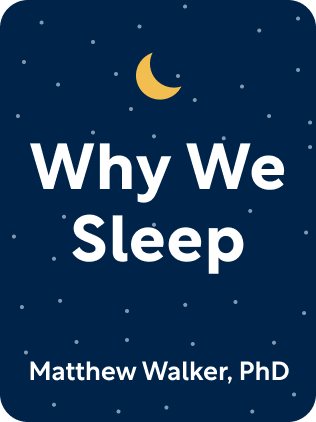

This article is an excerpt from the Shortform summary of "Why We Sleep" by Matthew Walker. Shortform has the world's best summaries of books you should be reading.
Like this article? Sign up for a free trial here .
What are the benefits of dreaming? Why do we dream, and what do our dreams mean?
It turns out that the benefits of dreaming are right in front of our eyes. The benefits of dreaming include increased brain function and emotional processing. It’s a unique process that science is still learning about.
The Benefits of Dreaming
Dreaming is a bizarre sensation. You’re unconscious, but you perceive intense vivid sensations and hallucinate things that aren’t there. You feel like you’re moving in the world, but your muscles have been forced to be limp. You remember faces and memories that you haven’t thought about for years, maybe decades. You had no control over your emotions, swinging from intense rage and jealousy to exuberance. Finally, when you woke up, you promptly forgot everything. If you experienced all of this while awake, you’d think you had a psychosis episode!
It’s not surprising then that dreaming has had a complicated history. In the ancient past, Egyptians and Greeks wondered if dreams were divine gifts from gods.
Freud helped dispel this, firmly centering it within the human brain. He considered dreams as expressions of repressed desires, and he built a psychological movement around interpreting dreams as such.
- The critical flaw in Freudian analysis was its unprovability – the interpretation methods were so subjective that different approaches yielded different results, and there was no strict hypothesis that was testable.
- Furthermore, the interpretations were horoscopically vague, thus seeming full of significance but not providing any practical insight (like “your dream is reminding you of how little time you have to do all the things you want to do.” Pretty much everyone feels this way.)
The Benefits of Dreaming, According to Science
Most vivid dreaming happens during REM sleep (though NREM sleep has some vague non-vivid dreaming, like “I was thinking about clouds”).
During REM dreaming, your visual, motor, memory, and emotional areas of the brain are active. Your prefrontal cortex (governing rationality) is muted.
Interesting: it may be possible to predict what you’re dreaming about through fMRI.
- To build a profile of your brain, you look at different images while awake, and the fMRI signature is captured.
- Then as you dream, your dreaming fMRI is matched to your awake fMRI profiles, predicting what you’re currently looking at while dreaming.
We often think about the meanings of our dreams. Do dreams merely replay events of the day, or do they reflect our emotional concerns?
- A study showed that only a small fraction (1-2%) of dreams replay the literal events of the day.
- A greater fraction (~45%) reflect our underlying emotional worries we have while awake.
We’ll now discuss three benefits of dreaming and REM sleep.
REM Sleep Blunts Emotional Pain from Memories
REM dreaming reduces pain from difficult emotional experiences. The brain seems to reprocess upsetting memories and emotional themes, retaining the useful lessons while blunting the visceral emotional pain. This might be why we can look back at painful memories without feeling the original full emotional intensity. This is one of the benefits of dreaming.
Interestingly, dreaming about the upsetting content itself, or its emotional themes, is necessary to have this emotional blunting effect. REM sleep by itself does not.
How might this happen? In REM sleep, the stress hormone norepinephrine in your brain is reduced to zero, which possibly allows the brain to process upsetting memories in a “safe” brain environment. In fact, REM sleep is the only time that norepinephrine is absent from your brain.
Suggestive evidence:
- PTSD patients have elevated norepinephrine in REM sleep. They also have recurring nightmares where the pain of the memory does not fade, either dreaming or wake.
- Reducing norepinephrine levels through a drug reduces PTSD severity in a subset of patients.
- In an experiment, subjects were shown a series of emotionally triggering images two separate times, separated by ~12 hours. One group saw set 1 before sleeping and set 2 after sleeping. The other group saw both in the same day without sleeping, set 1 in the morning and set 2 at night. The former group reported much less emotional disturbance upon seeing the images the second time, suggesting sleep had blunted their emotional reaction.
REM Sleep Increases Understanding of Other People’s Emotions
Sleep deprivation reduces your ability to interpret subtle facial expressions. Sleep-deprived people more often interpret faces as hostile and aggressive.
Suggestive evidence: people on the autism spectrum have disrupted REM sleep. They also have issues reading people’s facial expressions
This function seems to begin in adolescence, when kids have to start navigating the social world independently.
Imagine the mistakes sleep-deprived professionals can make – police, medical staff, parents – if they mistake faces for aggression.
REM Sleep Increases Creativity
Another one of the benefits of dreaming is that it increases creativity. REM sleep creates novel associations between ideas, increasing creativity and problem-solving.
Informally, imagine the brain asking: “how can I connect what I’ve recently learned with what I already know, thus discovering insightful revelations? What have I done in the past that might be useful in solving this new problem?”
Thomas Edison knew the power of dreams. Reportedly, he would fall asleep holding metal ball bearings, releasing them just as he entered REM sleep. The noise would wake him up, just in time for him to write down his dreams before he forgot them.
These experiments showed a bevy of positive effects on creativity:
- REM sleep creates novel connections, between distantly related concepts
- In essence, the brain takes and builds a larger mental network of separate ideas. For example, you learn A->B and B->C separately, and the brain forms the larger relationships A->B->C.
- In this way, your brain connects new experiences to old ones. If you have to solve a problem today, you might think back to a similar problem you solved on vacation 5 years ago.
- REM sleep creates higher-level comprehension of ideas, finding the patterns among the noise
- Examples: language learning as a child, finding shortcuts for solving repetitive math problems
- REM sleep increases the ability to solve creative problems
- In an experiment, subjects in sleep were woken up to solve anagrams (eg OEOSG = GOOSE). Those waking up from REM sleep solved 15-35% more puzzles than those in NREM sleep or while awake.
- The content of REM sleep matters when solving that problem
- In an experiment, subjects were given a maze to solve and given a chance to nap. People who dreamt about issues related to mazes were 10x better at solving the maze upon waking, vs people who didn’t dream about mazes.
- The book cites Mendeleev, the chemist who developed the breakthrough periodic table of elements. He reported happening upon the solution in a dream
(Experimentally, how do we know REM sleep specifically helps with creativity, and is one of the benefits of dreaming? First, scientists define an exercise that has to do with creativity, like puzzle solving. Next, they split subjects into a sleep group and a non-sleep group. They measure each subject’s REM sleep with electrodes, and they show that more REM sleep increases performance on that exercise.)
Lucid Dreaming
Lucid dreamers are able to voluntarily control their actions during dreaming.
Lucid dreaming is real. Researchers can verify when someone is lucid dreaming by pre-arranging eye movements and hand signals while awake, then detecting it while the person is sleeping (the hand signals are detected by fMRI – remember, you can’t move during REM sleep because of muscle atonia).
Less than 20% of people in the population are capable of lucid dreaming, suggesting it might not be a hugely advantageous capability. But it sure sounds fun.
The benefits of dreaming might exceed our imaginations. Dreaming is a fascinating function, and the benefits of dreaming will surely continue to be uncovered.

———End of Preview———
Like what you just read? Read the rest of the world's best summary of Matthew Walker's "Why We Sleep" at Shortform .
Here's what you'll find in our full Why We Sleep summary :
- Why you need way more sleep than you're currently getting
- How your brain rejuvenates itself during sleep, and why nothing can substitute for sleep
- The 11-item checklist to get more restful sleep today






